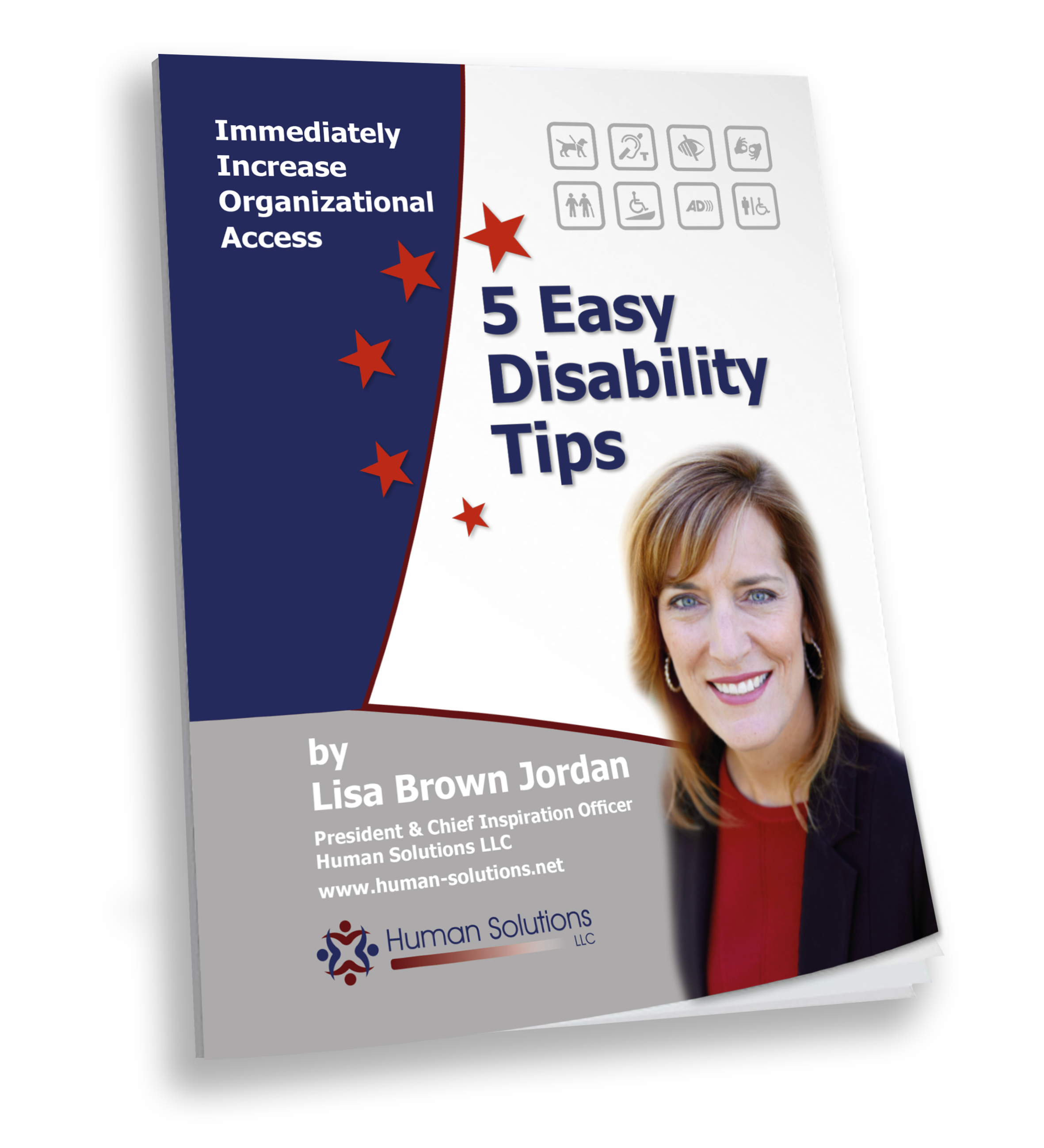Tip #4 – Communicate Effectively
Always address a person with a disability directly. Don’t speak to his companion, assistant or sign language interpreter. The use of common expressions such as “see you later” or “it was good to hear from you” are also perfectly acceptable. When communicating with a person who is blind, make sure you keep them well oriented. If you are providing directions, be specific. If you are in a group, verbally introduce everyone so that the person can take part in the conversation and always let them know before you leave their side.
When speaking to a person utilizing a wheelchair or to a person of short stature, the conversation will be much more comfortable if you face them on the same level. You can pull up a chair for longer conversations or kneel down.
A person who is deaf or hard of hearing may use a combination of lip reading and / or American Sign Language (ASL). While many individuals who are Deaf utilize ASL, it is not used by everyone and is not universal across cultures. For instance, someone in Mexico may utilize a different type of sign language than someone in the United States. When speaking, make sure to face the person during a conversation. Speak clearly and be sure not to cover your mouth or shout.. If the person is hard of hearing, their hearing aid will be calibrated to normal voice level. Your shout will only distort it and also make you look foolish. If a sign language interpreter is not available or the person is not a native signer, a low cost and immediate alternative, if the customer is comfortable, is to type back and forth on a computer or to use instant messaging.
For those individuals that have difficulty speaking, never pretend to understand what someone is saying. Ask them to repeat their sentence. Most people won’t mind and will appreciate your effort to listen.

Leave a Reply